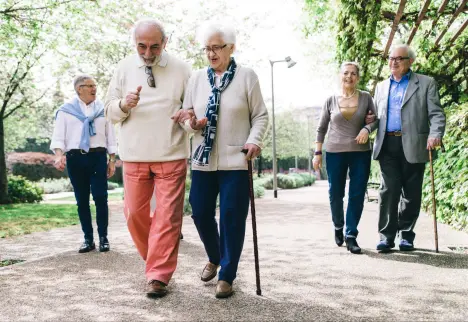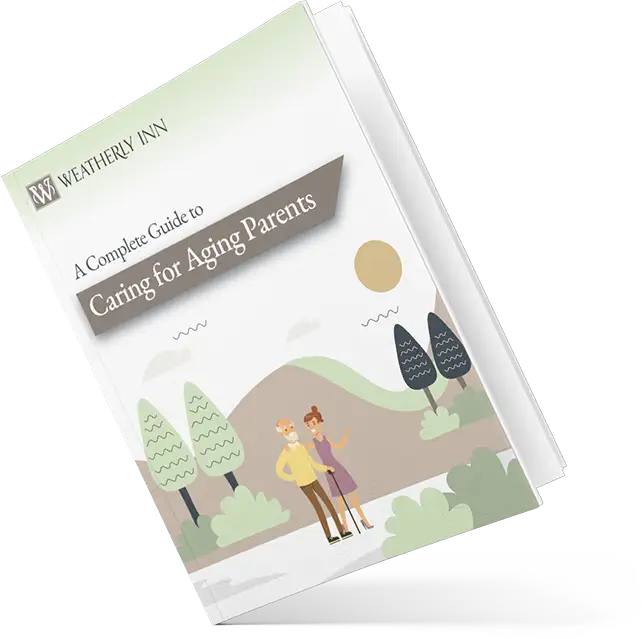January 29, 2025
A Path to Improved Health: The Benefits of Walking for Seniors
As we age, staying active becomes even more important for maintaining overall health and well-being. One of the easiest, most accessible, and beneficial forms of exercise is walking. In fact, research has shown that walking just 20 minutes a day, five days a week, can reduce the risk of disability by 41%, helping seniors maintain their independence as they age. Walking for seniors offers a range of health benefits that go far beyond physical fitness, enhancing mental well-being, promoting social connections, and increasing independence. Whether it’s a casual stroll through the neighborhood or a structured walking group, this simple activity can transform daily life for older adults.
Why Walking for Seniors is Essential
Walking may seem like a basic activity, but for seniors, it holds the key to a healthier, more fulfilling life. Regular walks can help prevent many age-related health issues, such as heart disease, high blood pressure, and diabetes.
Additionally, walking supports mobility, balance, and joint health—critical factors in preventing falls and maintaining independence as we age.
Incorporating walking into a daily routine also promotes mental health. Studies have shown that walking for seniors helps reduce symptoms of anxiety and depression, boosts mood, and enhances cognitive function. Walking encourages the release of endorphins, the body’s natural “feel-good” chemicals, while also providing time for reflection, mindfulness, and connecting with nature.
For seniors interested in exploring additional ways to stay active, there are numerous fun physical activities for seniors that can complement walking, including yoga, chair exercises, and even gardening.
Physical Health Benefits of Walking for Seniors
The physical health benefits of walking are well-documented. Walking is a low-impact activity, making it an ideal form of exercise for seniors who may have joint issues or other limitations. Unlike more strenuous forms of exercise, walking doesn’t put excessive strain on the body, yet it still helps improve cardiovascular health, increase muscle strength, and boost endurance.
Additionally, walking helps maintain a healthy weight, reducing the risk of obesity-related health conditions such as type 2 diabetes and heart disease. Walking regularly also aids digestion and circulation, helping the body function more efficiently. With just 30 minutes of walking a day, seniors can drastically reduce their risk of developing serious health conditions.
Seniors who want to expand their fitness routines can explore aerobic activities such as yoga and water aerobics, which complement walking and offer similar low-impact, full-body benefits.
Mental Health Boost Through Walking
The mental health benefits of walking for seniors are just as profound as the physical ones. Walking provides time for mental relaxation, reducing stress and improving mood. It’s a natural way to combat the feelings of isolation and loneliness that many seniors experience, especially those who live alone or have lost close friends or family members.
Cognitive health is another area where walking shines. Research has shown that regular walking can slow cognitive decline and lower the risk of dementia. By increasing blood flow to the brain, walking stimulates mental function and helps keep the mind sharp. This makes walking not only a physical exercise but a mental one as well, providing benefits that extend far beyond the body.
Social Benefits: Walking as a Group Activity
One of the greatest aspects of walking for seniors is its versatility. While it can be done alone, walking also presents wonderful opportunities for social interaction. Group walks, whether organized by assisted living communities or local senior centers, are an excellent way to stay connected and build friendships.
Walking groups foster a sense of community, reducing the feelings of isolation that can often come with aging.
For seniors dealing with conditions like dementia, walking with supervision can also be an essential part of maintaining a safe and structured routine. These interactions contribute to both physical and emotional well-being, fostering a more fulfilling lifestyle.
Walking to Improve Balance and Mobility
One of the top concerns for seniors is maintaining mobility and preventing falls. Walking regularly strengthens the muscles that support balance, helping seniors stay steady on their feet. Stronger legs, hips, and core muscles all contribute to improved stability, reducing the risk of falls—a leading cause of injury among older adults.

Walking also improves flexibility and joint health, making it easier for seniors to move about freely. By staying active and maintaining mobility, seniors are better able to perform daily tasks independently, which is key to preserving quality of life as they age.
For seniors who live alone, following safety tips such as maintaining well-lit walkways and having emergency contacts handy can ensure that walking remains a safe and beneficial activity.
Walking Outdoors: The Benefits of Fresh Air and Sunshine
Spending time outdoors while walking offers additional benefits beyond the physical act of walking itself. Exposure to fresh air and sunshine can boost vitamin D levels, which are crucial for maintaining healthy bones. Walking outdoors also provides opportunities to connect with nature, which can be incredibly soothing for the mind.
Nature walks or strolls through local parks offer sensory stimulation, from the sounds of birds chirping to the sight of beautiful landscapes. These outdoor experiences can improve mood, reduce stress, and create a greater sense of well-being, making walking even more rewarding for seniors.
Tips for Safe Walking for Seniors
While walking is generally safe, there are a few precautions seniors should take to ensure a safe and enjoyable experience:
- Wear proper footwear: Supportive, well-fitted shoes with good traction can prevent falls and reduce joint strain.
- Start slowly: Begin with shorter walks and gradually increase the duration and intensity.
- Stay hydrated: Bring water along, especially when walking outdoors or in warm weather.
- Walk with a buddy: Walking in pairs or groups can add a layer of safety and enjoyment.
- Listen to your body: Rest when needed and avoid overexertion.
By following these simple tips, seniors can enjoy the numerous benefits of walking without compromising their safety.
Incorporating Walking into Daily Life
For seniors looking to make walking a regular part of their routine, starting small is key. A short 10-minute walk around the block can be enough to get started, gradually building up to longer walks as fitness improves. Walking can also be combined with other daily activities, such as walking to a nearby store, taking the stairs instead of the elevator, or parking farther away when running errands.
Joining a walking group or setting personal walking goals can also provide motivation and structure. With consistency, walking can become a natural and enjoyable part of daily life, providing immense benefits with minimal effort.
Walking for Seniors at Weatherly Inn
At Weatherly Inn, we understand the profound impact that walking for seniors can have on overall health and well-being. Our assisted living community offers personalized programs that encourage residents to stay active through enjoyable, safe, and accessible activities like walking. Whether it’s a group walk through our beautifully landscaped grounds or a casual stroll around the neighborhood, we provide the support seniors need to stay mobile and independent.
Ready to Start? Discover how Weatherly Inn can help your loved one maintain an active and fulfilling lifestyle through our comprehensive wellness programs. Contact us today to schedule a visit and learn more about our commitment to senior health and well-being.



